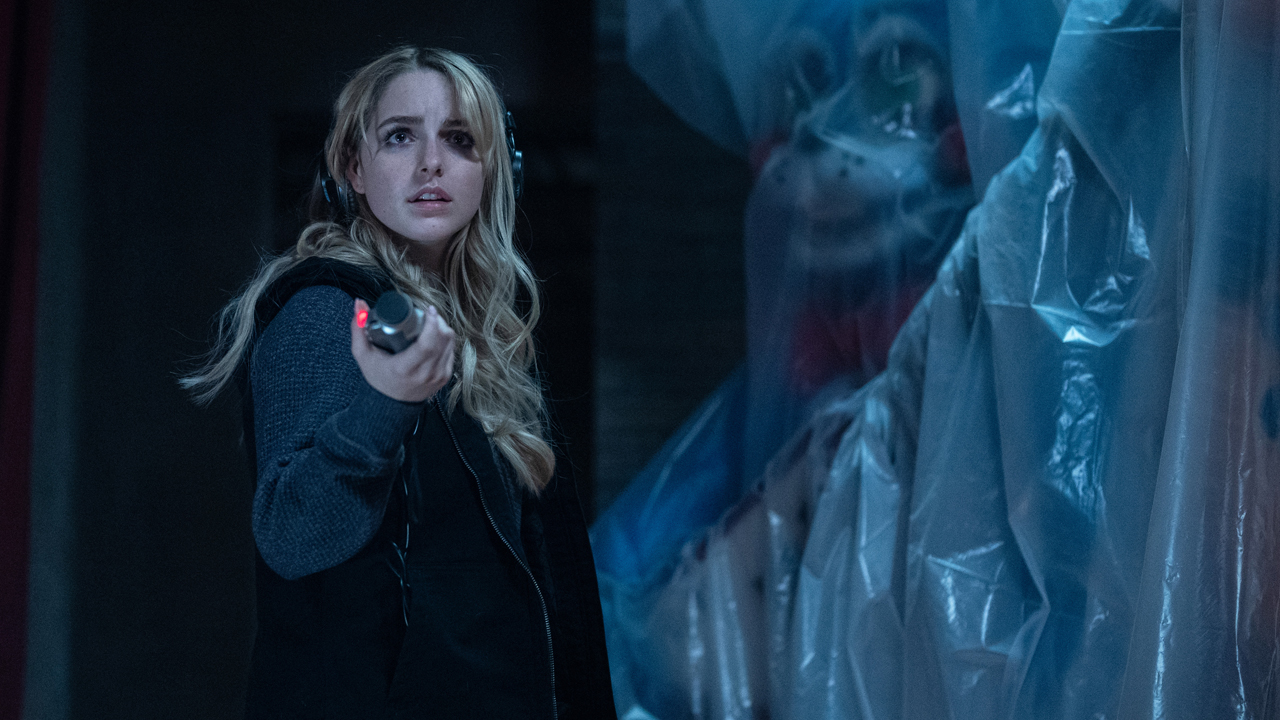Adapting Stephen King's Cell: John Cusack Rounds Out His King Trilogy With 2016’s Phone-Centric Apocalypse
Co-starring Samuel L. Jackson and Isabelle Fuhrman.
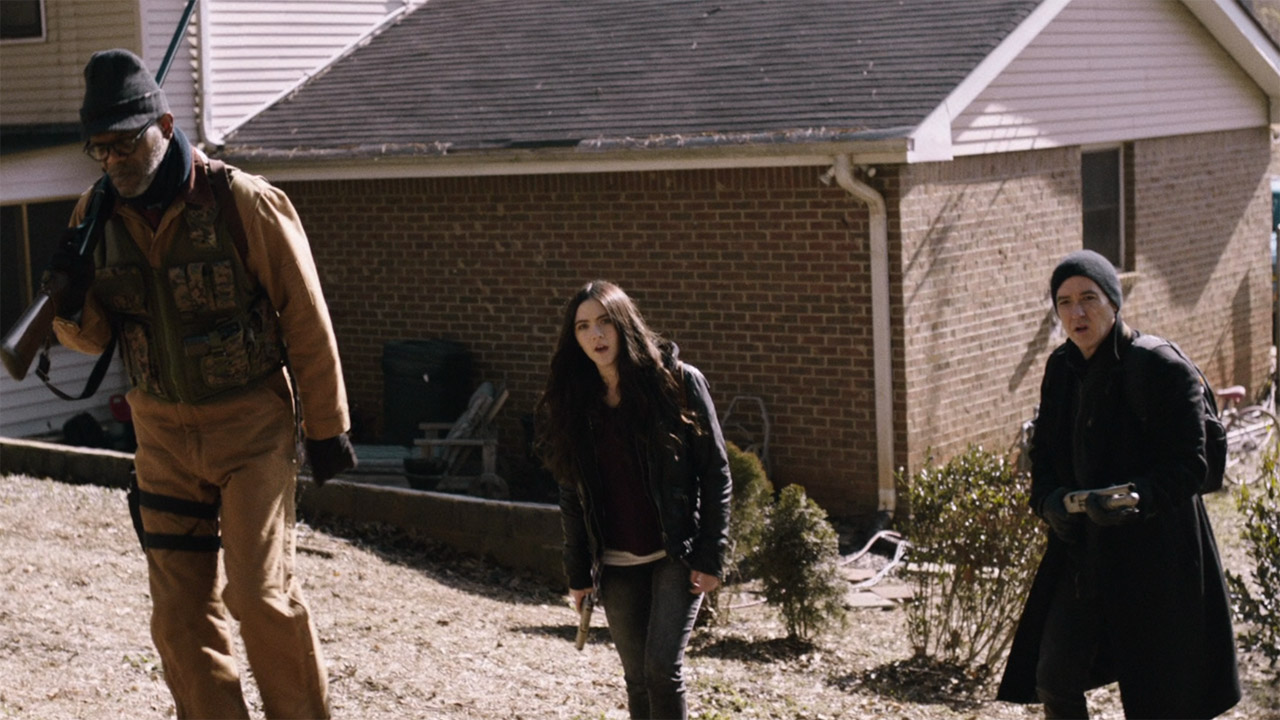
Horror is a genre that has a tendency to move in waves, and fans will remember that prior to the crazes for vampires and found footage movies in the late 2000s and early 2010s, zombies were the big “it” thing. On the big screen, Danny Boyle’s 28 Days Later put a new spin on the classic monsters when it was released in 2002, and its success led to a resurrection in Hollywood that gave us Zack Snyder’s remake of Dawn Of The Dead, the return of George A. Romero’s Living Dead franchise (including 2005’s Land Of The Dead, 2007’s Diary Of The Dead, and 2009’s Survival Of The Dead), and the Walking Dead television series.
Stephen King had his own contribution to the hot trend in 2006 with the publication of the novel Cell, but in a strange twist of fate, the film industry was late to capitalize. As reported by Variety, Dimension Films first picked up the rights to the book just three months after it was released (a move made concurrently with the studio’s development of Mikael Håfström’s 1408) and Eli Roth was attached to direct the adaptation as his follow-up to Hostel 2. Unfortunately, the project fell apart over the course of three years, with Roth telling Shock Till You Drop in 2009 that creative differences led him to walk away.
Cell found new life as an adaptation that same year, as Stephen King himself took a crack at developing the screenplay – wasting no time informing Constant Readers that he was making plans to change the ending. Time continued to pass by for the project even with the author directly attached (and Last House On The Left’s Adam Alleca credited as a co-writer), but gears finally started to turn in earnest on Halloween 2012. On that holiday, it was reported that 1408 and Stand By Me’s John Cusack had signed on to star, with Cargo Entertainment financing the movie, and in the subsequent months it was reported that Paranormal Activity 2’s Tod Williams was hired to direct.
It took almost two years after Cell was completed for it to find distribution, but it finally got a VOD and limited theatrical release in the summer of 2016 – more than a full decade after development first started. As for whether or not all of that time and work was worth what we see in the finished result, that’s the subject of this week’s Adapting Stephen King.
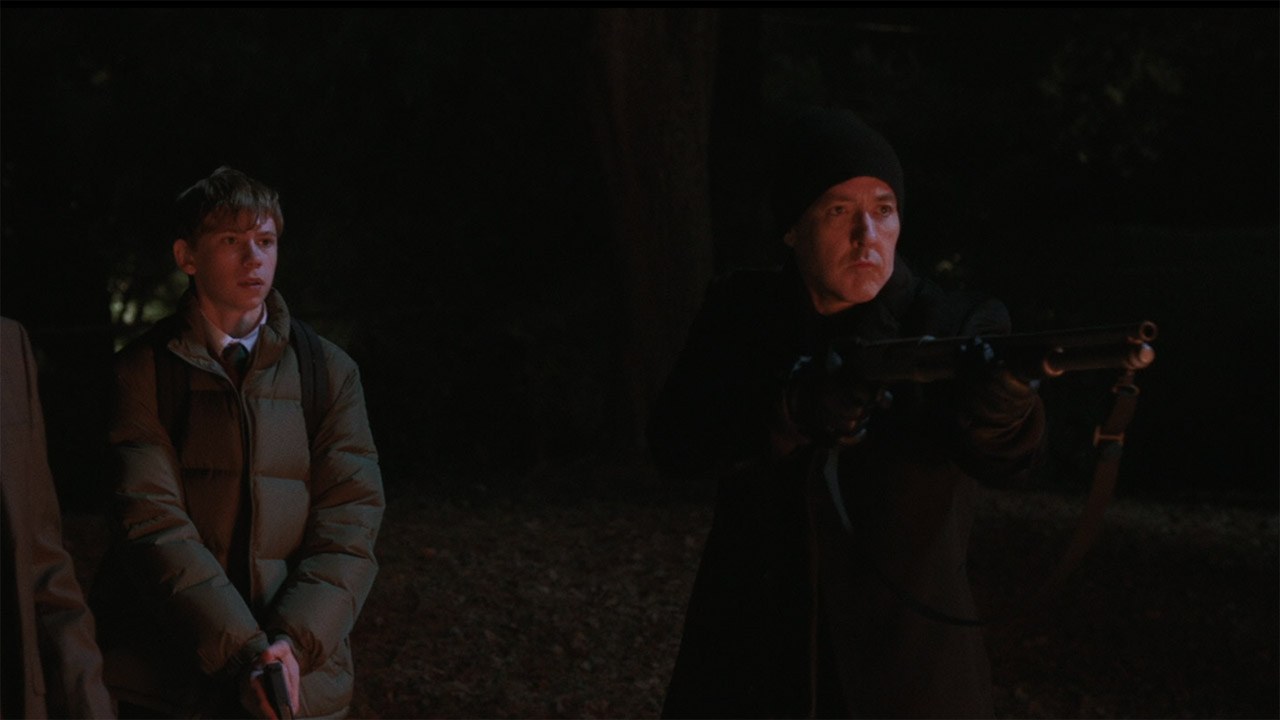
What Cell Is About
In 2022, mobile phones are devices that have become engrained in the function of society, but in the early 2000s their presence in our world was still a novelty. The technology had been around for decades, they began to feel ubiquitous by the turn of the century, and they started to change both the way that people behaved and how they looked at the world.
For instance, it might no longer seem strange to see someone walking down the street, ranting and raving to no one in sight – and it was actually witnessing an example of this that led Stephen King to get the idea for Cell. As noted in the “Inspiration” section of the book’s page on StephenKing.com, the author was on a stroll in New York one day and became “apprehensive” when he spotted a man down the sidewalk in a business suit who seemed to be talking to himself. King immediately assumed that the individual was mentally unwell, but he was delivered a fascinating shock when the stranger came closer and his wired headset became visible:
It was the incongruity of a person who may not be in touch with reality, but dressed in a business suit that sparked the idea for Cell.
At the time, there were already hundreds of millions of cell phones in use around the world, and the writer pondered what would happen if all of those in use started broadcasting a “pulse” that essentially hit the reboot button on the human brain. What would happen if the “phoners” went from being mindless, feral animals to being reprogrammed with new software, and what would happen to all of those who avoided the reprogramming at the start? These are the questions answered by the plot of Cell.
Your Daily Blend of Entertainment News
Clay Riddell is introduced as a cell phone-phobic artist who finally gets his big break at the start of the Stephen King novel, having traveled to Boston to successfully sell his original comic book, Dark Wanderer. He goes to Boston Common with the intention of getting a gift for his son Johnny before traveling back home to Kent Pond, New Hampshire, and it’s while he waits in line at an ice cream truck that everything goes to hell. Everyone actively using a cell phone becomes violently insane, and those who don’t start killing everyone around them start looking for ways to kill themselves.
After meeting a couple of fellow non-phoners – a middle-aged man named Tom McCourt and a young woman named Alice Maxwell – Clay heads north to Kent Pond so that he can learn if Johnny and his estranged wife Sharon are still alive. The trio meets other survivors along the way, but also witnesses behavioral patterns among the zombies, as they not only start to get more intelligent, but start showing evidence of creating a hive mind.
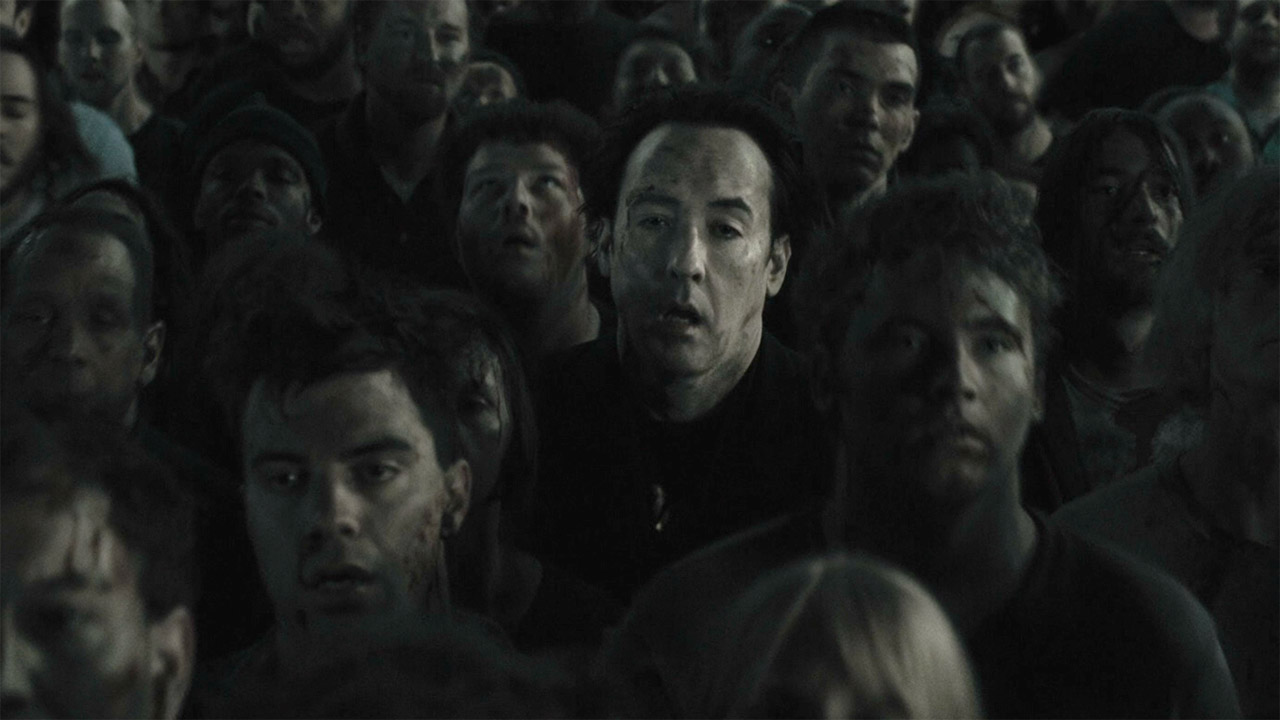
How Tod Williams’ Cell Differs From Stephen King’s Novel
Beyond the de facto expectations that come with an author adapting their own work, Stephen King has a track record for staying faithful to the source material when bringing his stories to new mediums – his screenplays prior to 2016 including Creepshow, Cat’s Eye, Silver Bullet, Pet Sematary and A Good Marriage. Cell is a pretty radical exclusion, as King basically used the film to create an alternate draft of his book with a lot of changes.
Tod Williams’ movie doesn’t waste any time telling Constant Readers-turned-movie-goers that the feature is going to be different than the novel. Not only does the setting of the opening chaos sequence change (moving from Boston Common to Logan Airport), but a key detail about Clay Riddell (John Cusack) is changed: he is no longer a luddite in the cell phone age, as he is shown calling Sharon (Clark Sarullo) and Johnny (Ethan Andrew Casto) from his own device as he waits for his flight. His battery dies mid-call, ultimately protecting him from the pulse.
Getting away from the airport, Clay meets Tom (Samuel L. Jackson) and Alice (Isabelle Fuhrman) under altered circumstances as well. In the book, Tom is a stranger that Clay meets in Boston Common, and they team up simply because they both happen to be non-phoners. In the movie, Tom is introduced as a conductor of an MBTA subway that Clay hopes to ride on as an escape, but the whole line is shut down. Along with another person who ends up getting quickly killed, Clay and Tom leave behind a car full of strangers to try and find an escape.
In the book, Clay and Tom try to find shelter in the former’s hotel, but that’s another thing that is different in the movie. The marital problems between Clay and Sharon are amplified, and instead of just being in Boston on business, the protagonist has been living in the Massachusetts city and has an apartment. He takes Tom there after getting away from the airport and out of the subway tunnels, and it’s while they are taking shelter that they find Alice – who isn’t a stranger, but instead is introduced as Clay’s upstairs neighbor.
While skipping over the part of the novel when the characters temporarily go to Tom’s house, and adding in an action beat where the protagonists have to fend off a flock, Tod Williams’ Cell sticks to the source material for most of the second act, but things really change again after Clay, Tom, and Alice go to the private school Gaiten Academy and join Charles Ardai (Stacy Keach) and the young student Jordan (Owen Teague) in setting a soccer field full of phoners on fire. In the novel, this move ends up being judged as a miscalculation, as it gets the group branded as flock-killers and directly targeted by the hive mind – with big bad The Raggedy Man (Joshua Mikel) showing up at the school and instructing them to move on.
The group is certainly targeted by the phoners in the movie, but all elements of communication and contact between them is eliminated – including The Raggedy Man telepathically talking through Clay during a “conversation” between the characters, and Charles Ardai being psychically compelled to stab himself through the eye with a pen.
Further altering the activities of The Raggedy Man, the movie still has the villain invading the dreams of the protagonists, but he delivers individualized nightmares instead of what’s in the book (which is a shared vision of the main characters on pedestals in the middle of a large stadium full of phoners). For an unexplained reason, the film also has the antagonist be featured in Clay’s Dark Wanderer comic, suggesting that he had some kind of connection with the phoner leader prior to the pulse.
Lastly, there is the changed ending that I teased earlier. In the movie, Clay goes to the much-discussed Kashwak state park to try and find Johnny, and he plans to use an ice cream truck full of explosives to kill The Raggedy Man. He has a fantasy that this all works out, but instead he ends up becoming a phoner himself and marching with the rest of the hive mind.
In the book, Clay is still with Tom, Jordan and a woman named Denise (Erin Elizabeth Burns) when he arrives in Kashwak, and they don’t realize that the bus in which they are riding contains explosives until they are captured and set for execution. When it dawns on Clay that he has a cell phone programmed to trigger the bomb in the vehicle, the whole group is able to survive and escape. While Tom, Jordan, and Denise travel to Canada, Clay stays behind to search for Johnny. The father is reunited with the son, who is a phoner, and the novel ends as Clay puts a phone to Johnny’s ear, hoping that a second dose of the pulse will somehow cure him.
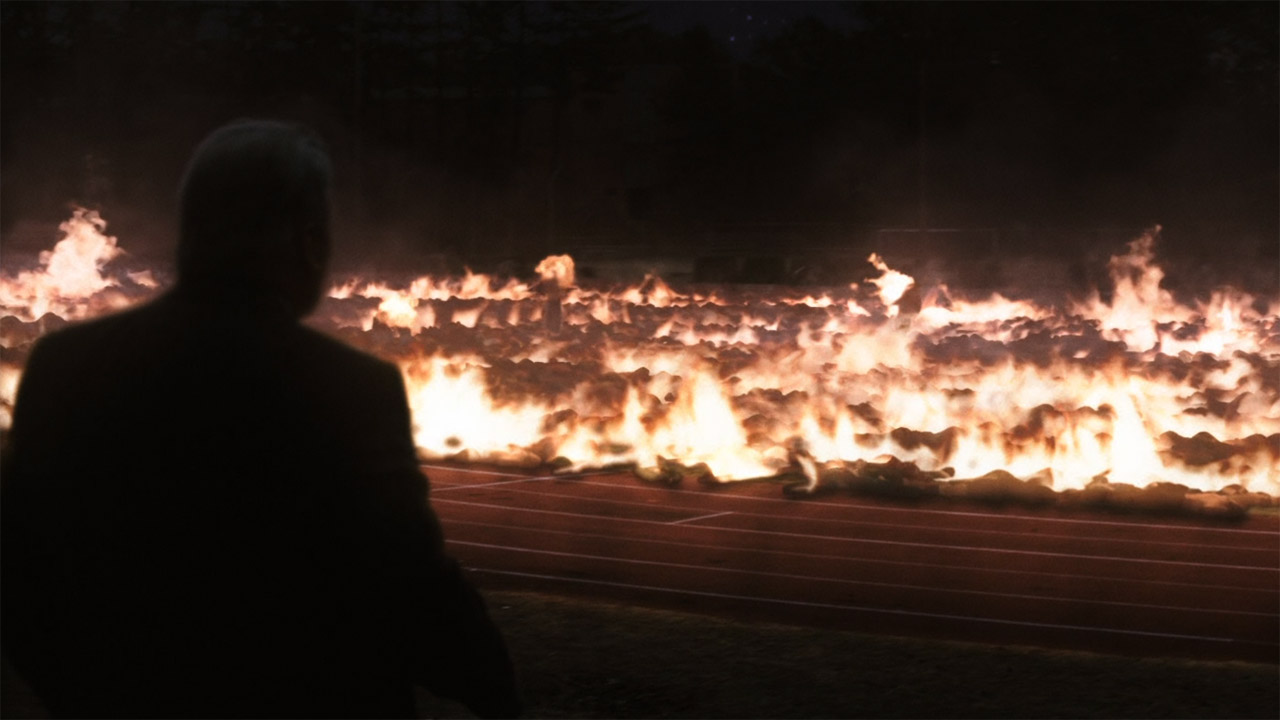
Is It Worthy Of The King?
Stephen King is pretty damn talented when it comes to ending the world. The Stand, of course, is one of his many masterpieces, and I’ve also already expressed my appreciation of the short story “The End Of The Whole Mess” via the Nightmares & Dreamscapes adaptation. Cell, on the other hand, is a swing and a miss as a book, delivering neither a particularly interesting apocalypse, nor an engrossing collection of characters.
The movie was King’s chance to craft a kind of post-publication draft, and he obviously altered a lot with it – but the film doesn’t actually address the biggest issues with the book. The stakes max out in the first action sequence, the journey north to try and save Johnny and Sharon is too straightforward and slim to be compelling, and even with three talented actors in the roles (including a 1408 reunion for John Cusack and Samuel L. Jackson) there is not enough to the characters to inspire investment. And while the novel just peters out, the downer ending invented for the film feels like an attempt to capture some of what Frank Darabont’s The Mist does, only it doesn’t earn it at all.
Time has removed the stain of Cell being a late-to-the-party zombie movie, but that just leaves it as a forgettable entry in the expansive cinematic subgenre.

How To Watch Tod Williams’ Cell
Should you care to check out Tod Williams’ Cell, there are plenty of options at your disposal. Those looking to create the Ultimate Stephen King collection will want to pick up the Blu-ray put out by Lionsgate, but there are plenty of digital choices as well. If you don’t mind watching movies with ads, YouTube, PlutoTV, Tubi, FreeVee, Vudu, and Plex are all streaming the Stephen King movie for free, and you can rent or purchase the film from Amazon Prime Video, Apple, and Google Play.
Next week, Adapting Stephen King will be heading back to the CinemaBlend TV section because it will be time to discuss The Mist – the on-going series that aired on Spike in the summer of 2017. The feature will be on the site next Wednesday, and until then you can explore all of the previous installments of this column by clicking through the banners below.







Eric Eisenberg is the Assistant Managing Editor at CinemaBlend. After graduating Boston University and earning a bachelor’s degree in journalism, he took a part-time job as a staff writer for CinemaBlend, and after six months was offered the opportunity to move to Los Angeles and take on a newly created West Coast Editor position. Over a decade later, he's continuing to advance his interests and expertise. In addition to conducting filmmaker interviews and contributing to the news and feature content of the site, Eric also oversees the Movie Reviews section, writes the the weekend box office report (published Sundays), and is the site's resident Stephen King expert. He has two King-related columns.
